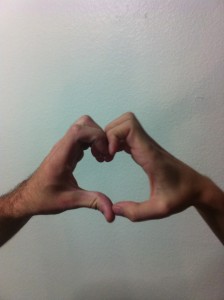“The Bernie Dance.”
Rob told me that he learned this from his friend over Thanksgiving break when he was in Redding, Pennsylvania (his hometown). His friend told him the dance because he thought it was funny and he had been seeing other people do it at bars and clubs around the area.
Rob told me that the dance is based of the movie Weekend at Bernies, in which the characters take a dead person around with them and pretend that he is alive. To do the dance (as demonstrated in the video (Professor Thompson if you’re reading this the video did not upload, I will keep working on it but since the project is due at midnight I will post this now and email the video later), you basically just lean your head back, arch your back slightly, and flail your arms while leaning from side to side. This is supposed to simulate the way a dead person might move (as in Weekend at Bernies).
Rob told me he’s not sure why this dance exists, but that it’s a “hot new dance that’s blowing up in the clubs.” He said more and more people that he meets have heard of the Bernie dance as time goes on.
I think that this dance likely exists as another example of the many “urban” dances based on popular culture references, usually set to rap songs. There’s the “Crank that Lion King,” “Spiderman Dance,” and several other dances in which the dancer is supposed to do an action that mimics a popular culture reference. These dances, including the Bernie, are funny because they usually reference a film that doesn’t seem like it would go together with rap music.
It’s interesting that this piece of folklore is based on an authored work (the film Weekend at Bernies). Even though that film came out over twenty years ago, it is still being referenced in popular culture today. The dance, then, probably acts as a way for people to demonstrate their understanding of pop culture history. References are popular in TV and movies, and you always feel a sense of superiority if you understand a reference. The group of people that likely practices The Bernie dance was young when the movie came out, so the dance serves as a way for that group of people to express nostalgia and demonstrate their understanding of pop culture history.
The dance is referenced in the song “Movin’ Like Berney” by rapper ISA. Some believe that the dance originated with that song, but the dance can be performed to any song.




